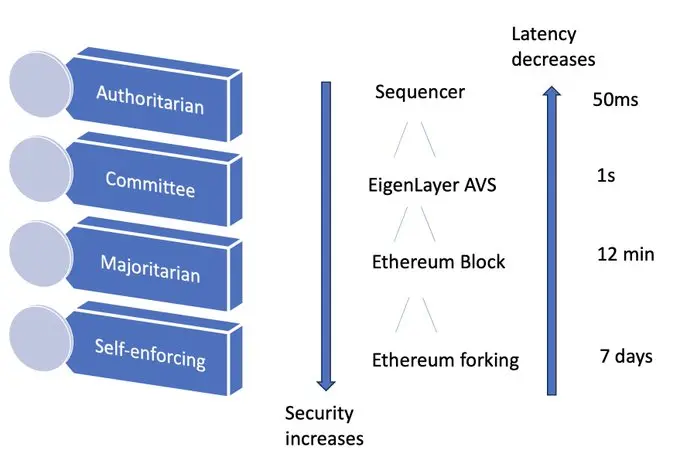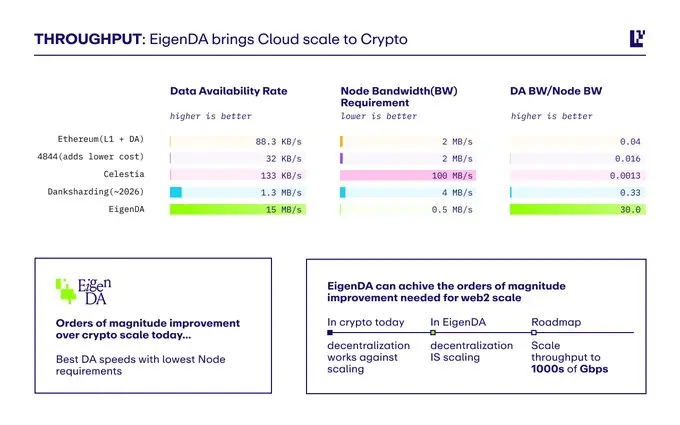Original Title: ETH vs SOL
Original Source: Sreeram Kannan, Founder of EigenLayer
Translation: xiaozou, Golden Finance
Note: Who will be the ultimate winner in the battle between ETH and SOL? Sreeram Kannan, the founder of EigenLayer, debated with Lily Liu from the Solana Foundation two weeks ago at Crypto Research Day 2024, where Sreeram Kannan argued that ETH will prevail.
On October 16, EigenLayer founder Sreeram Kannan summarized the key points of his debate with Lily Liu. This article is translated by xiaozou from Golden Finance.
Reasons Why ETH Will Prevail:
- ETH: Nested Coordination + Asynchronous Scaling
- SOL: Fast, but the complete copy model limits growth
- L2s: Viewed as a weakness, but in reality, they are ETH's hypersonic missiles
- Culture: ETH values > individual gains (this is important!)
- Vision: ETH = World Computer, SOL = Fast version of Nasdaq
- Trade-offs: ETH builds trust, SOL iterates quickly
Don't jump to conclusions yet; there's more to come…
1. Core Argument: ETH L2 Architecture = Nested Coordination Mechanism

Self-enforcing (Fork: can only fork when the block is verifiable by end users) takes about a few days. Majoritarian (validators complete a block) takes a few minutes. Committee (Eigenlayer validator committee provides rapid economic finality) takes 1 second. Authoritarian (sorter provides instant confirmation) takes 10 seconds.
The result is an Instagram-scale user experience with Bitcoin-scale self-verification!
2. ETH Baseline? Trust Comes from Predictability.
Imagine 500 people arguing over the slightest change. Sounds like a nightmare, right? But that's ETH's advantage.
ETH has built long-term trust. You can be sure the rules won't change overnight.
What about SOL? An organization can change the rules at any time. The boundaries between protocols and applications are blurred.
3. What Are SOL's Constraints? Complete Copy (like all other cryptocurrencies).
Every node has to download the entire data system throughput single node bandwidth the more nodes, the greater the throughput
This is a scalability dead end.
What is ETH's answer? Danksharding.
n nodes * 10MB/s = n * 10MB/s throughput more nodes = more throughput for 1M validators, we are talking about theoretical TB/s. This is not a typo.
EigenDA is making all of this a reality. Right now.

L2: ETH's Secret Weapon
Instant confirmation (100ms) borrowing security from ETH is now the best place to build most applications
4. Culture > Strategy
ETH culture > SOL strategy. Why? Because of shared values: anti-censorship, open innovation, trusted neutrality.
These are not just trendy buzzwords. They are the foundation of trust.
5. ETH's Vision: World Computer
Not just faster payments. We are talking about applications with reliable commitments.
Imagine a crypto-native version of Facebook promising: "We will not change the privacy policy without the consent of the majority of users."
How is this done? By making computation verifiable on ETH. Users can trust the commitments. No more web2 "take it or leave it" ultimatums. This is the power of ETH's world computer vision.
6. Self-Verification: ETH's North Star
Every user should verify the complete system. Sounds crazy? Maybe. But this is the key to true decentralization. This constraint initially limited throughput.
Rollups cracked this code, changing the game:
Maintain self-verification while significantly increasing throughput user verification proof, rather than all data
7. Asynchronous vs. Synchronous Composability
ETH: Asynchronous Composability
SOL: Synchronous Composability
Most real-world applications require asynchronous composability. Think of MMO games.
8. Asset Entry and Liquidity
SOL: A large pool
ETH: Distributed across L2s
SOL seems simpler. But there is a problem: single point of failure.
ETH may seem more decentralized.
But that's not the case. It is resilient.
ETH = Programmable currency across all L2s.
Long-term resilience > short-term convenience.
9. Ecosystem Development: ETH's Advantage
Why are we developing EigenLayer on ETH? Simply put, for predictability.
You know the rules of the game on ETH. They won't change overnight. What about the ETH chain itself? It won't steal your lunch either.
Of course, Solana has speed advantages, but there is a problem: an organization can co-opt any brilliant idea.
Where are the boundaries between protocols and applications? Neither you nor I can figure it out.
ETH is an open playground. Innovate based on L2. You can sleep easy.
Your ideas are always your ideas.
What’s the result? ETH attracts serious builders. Visionaries come together for the long haul.
10. ETH vs SOL Outcome
SOL = Sprinter
ETH = Marathon Runner
In the cryptocurrency space, we are in it for the long haul.
The future is not a choice between "speed or security," but rather a combination of "speed and security."
ETH + EigenLayer achieves this.
We are not just building on ETH; we are rapidly advancing its development.
免责声明:本文章仅代表作者个人观点,不代表本平台的立场和观点。本文章仅供信息分享,不构成对任何人的任何投资建议。用户与作者之间的任何争议,与本平台无关。如网页中刊载的文章或图片涉及侵权,请提供相关的权利证明和身份证明发送邮件到support@aicoin.com,本平台相关工作人员将会进行核查。




